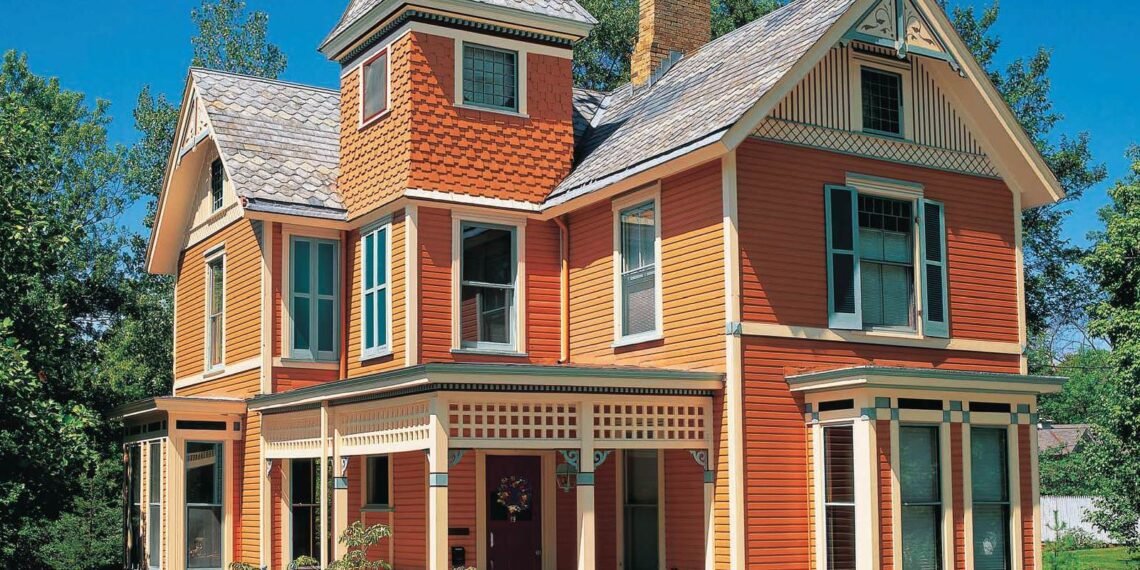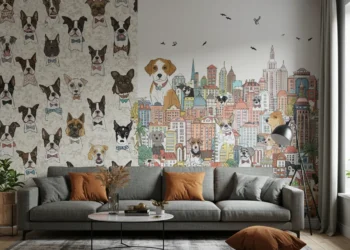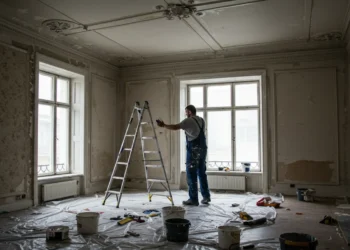Selecting the house color is always a fun-filled element of home decor as it gives an opportunity to display creativity colorfully. When it comes to Victorian house colors, it gets more exciting because Victorian homes have beautiful and intricate architectural features that can look awe-inspiring with the right color choice. These homes were inspired by British and Italian architecture and had a rich history behind them.

In the past, when merely muted tones were the only options, there was limited scope to show the architectural details of the Victorian house. But, in the present modern era, there are multiple color shades for you to choose from. In this article, we have shortlisted some of the colors for you.
Read more: 12 Most Popular House Siding Colors
Key Architectural Elements In Victorian Homes
- It has ornamental details such as carved columns, scroll roofs, gable posts, and spindles.
- Unique trim work detailing
- Pitched roof
- Beautiful decorative feature
- Woodwork with a curved shape
- Wraparound porches
- Pointed porch roofline
Victorian Sub-Styles
Queen Anne

Queen Anne is a type of Victorian house exterior style that gained popularity in the post-industrialisation period and made its way to America. The color and design reflect inspiration from Islamic designs. Later on, American designers made changes in the color palette in their way. Due to technological advancement, western towns got affordable products such as dormers and square towers to decorate the buildings in Queen Anne style.
Italianate
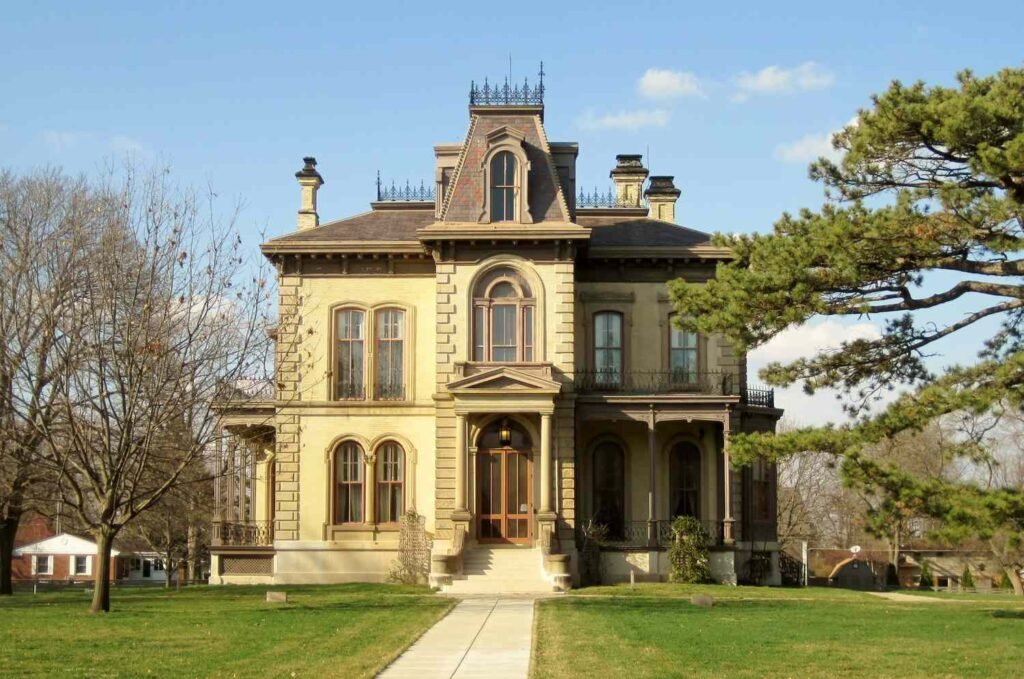
In the early 19th century, with the flow of wealth directly and indirectly due to industrialization, economically weaker sections also got access to building materials to show their affluence. People had the option to build cottages with batten siding inspired by Italian villas.
Gothic Revival

The Gothic Revival is also known as a romantic movement in architectural design, which later on passed to different school and office buildings. It is known for its unique detailing, pointed arches, and large windows.
How Do Architectural Details Influence Color Choices?
The architectural detailing impacts the color choice as the intricate detailing of all the parts of the house has an impact on the look, which can get highlighted or look dull with the right or wrong color selection.
- For a less lit room, green or gray is advisable, and a light shade of red is good for a bright room.
- Wooden work to be painted with tarnish
- Pastel shade is preferred for trim
- Over the years, color choice has evolved, and people have moved to multiple colorways for their homes.
Tips On Modernizing Victorian House Colors Schemes For Contemporary Lifestyles
- Understand the basic color palette – The Victorian house colors were mainly dark tones of brown, maroon, red, green, and blue. Using the lighter shade of these colors on the walls and woodwork will modernize the look of the room.
- Relapse brown with blue or green – The Victorian homes were painted brown, giving a sad look, so the best substitute is green, teal shade, or blue for a contemporary look.
- Bring cream tones – Victorian homes never had pastel shades, so bring in pastel shades like off-white and grays for a modern look. You can mix one Victorina tone for a feel of the era.
Popular Victorian House Colors
- Beige with classic white
- Rookwood terra cotta and Amber
- Beige with gray-blue
- Dark green, olive, gold and straw
- Beige, terracotta, red and dark green
- Downing sand, stone, earth and slate
- Classic white, downing slate, red and navel
Points To Consider While Choosing The Victorian House Colors
- Location and environment – The place where you live makes a difference to your color choice. For areas with greenery all around, light colors will impact the exterior look, and for areas with bright sunlight, light colors may look sharp.
- Architecture – The architectural detail plays an important role in enhancing the impact of color. Victorian homes have intricate detailing with pegboards, columns, and scroll accents for which color selection is vital.
- Don’t use multiple colors to focus on small features.
- Paint the bottom with the darkest color.
- Avoid using stark contrasts.
- Decide what kind of look you want. The color palette for traditional homes is different from the modern ones.
The Popular Brands To Buy Colors For Victorian House
- Sherwin Williams
- Behr
- Benjamin Moore
Read more: Dark Green Wall Colors By Benjamin Moore & Sherwin Williams
Victorian House Colors To Enhance The Beauty Of Your Home
Earthy Tones with a Pop of Red
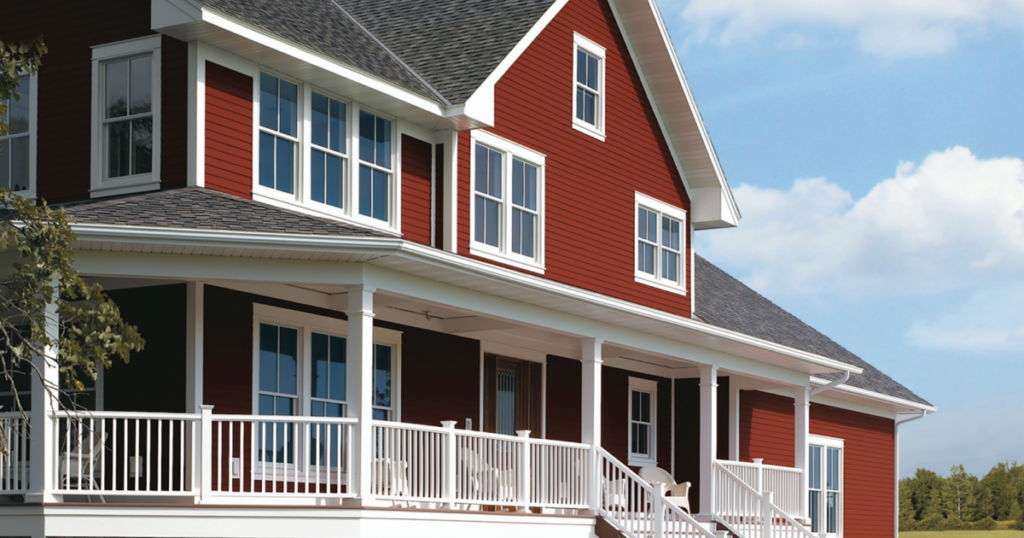
Earthy tone colors such as green. Brown and blue are inspired by nature and prove the best color combination with a touch of red. This combination makes the exterior house stand out from the common palettes.
Pastel Elegance

To extend a whimsical and coastal look, go for sea glass shingles, off-white trim, and blush accent combination for a brighter and inviting look. Other shades of pastel hue, such as pink, yellow, and blue, give a modern and welcoming look.
Bold Jewel Tones
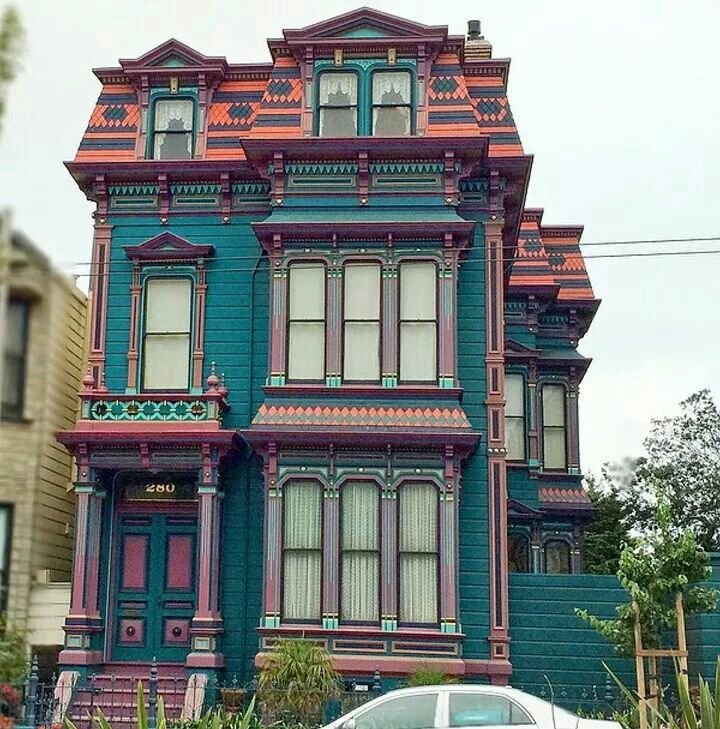
Jewel tones such as emerald green, sapphire blue, and ruby red are vibrant colours, unlike pastels, best known to add richness to the history of Victorian houses. Bold jewel tones enhance the depth of the historically rich Victorian homes.
Classic White and Black Contrast
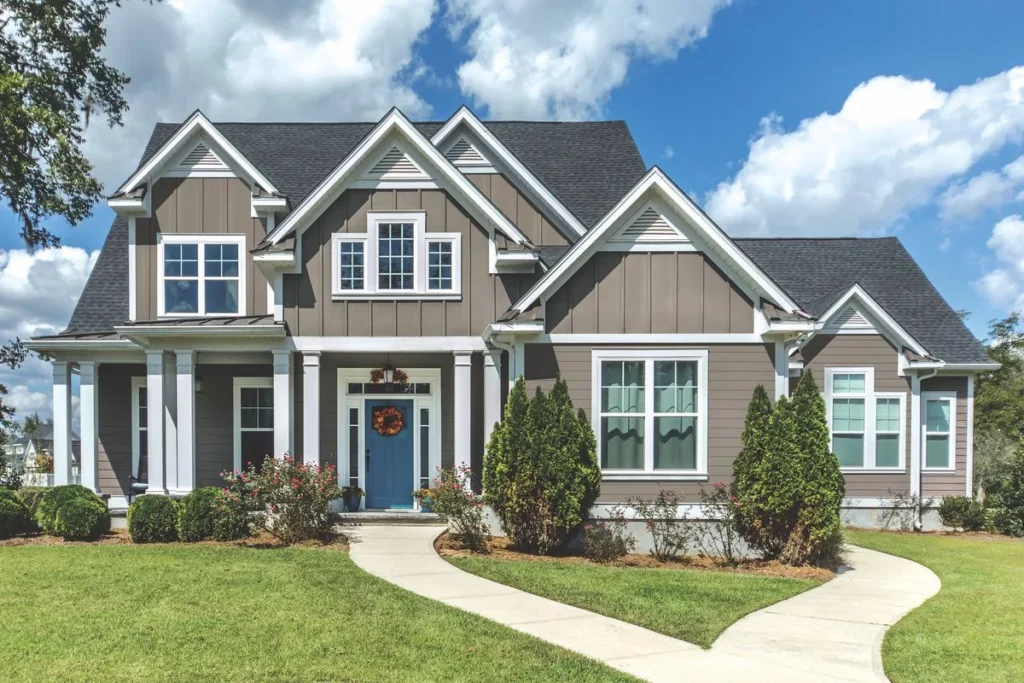
The black and white palette maintains the balance between the modern and traditional design. The black-and-white combination is a timeless choice that can’t go wrong. It adds an elegance that can’t go unnoticed.
Victorian-Era Greens and Reds

A Victorian home with a green color and red accent extends a classic historic look, adding stunning and refreshing surroundings. The color contrast amalgamates seamlessly with a unique and beautiful impact.
Monochromatic Neutrals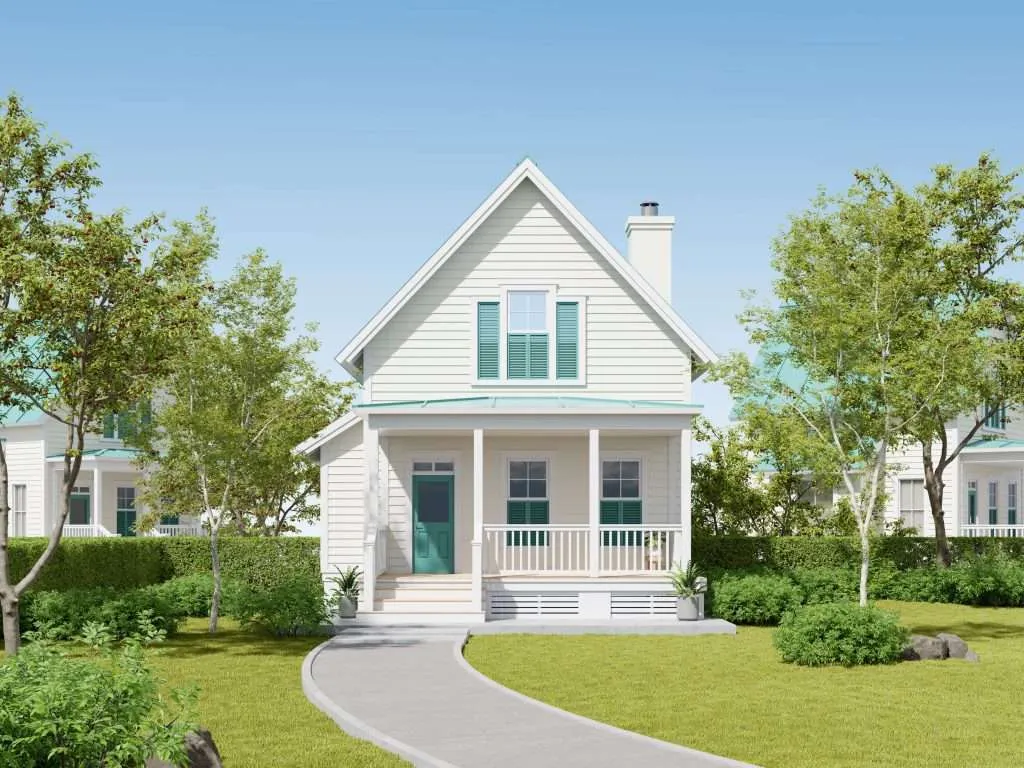
The power of monochromatic color depends on the shade and the surroundings of the location. Many people find monochromatic uninteresting, but if the color and the shade are selected properly, it looks sophisticated and beautiful, like The White House.
Rich Golds and Burgundies
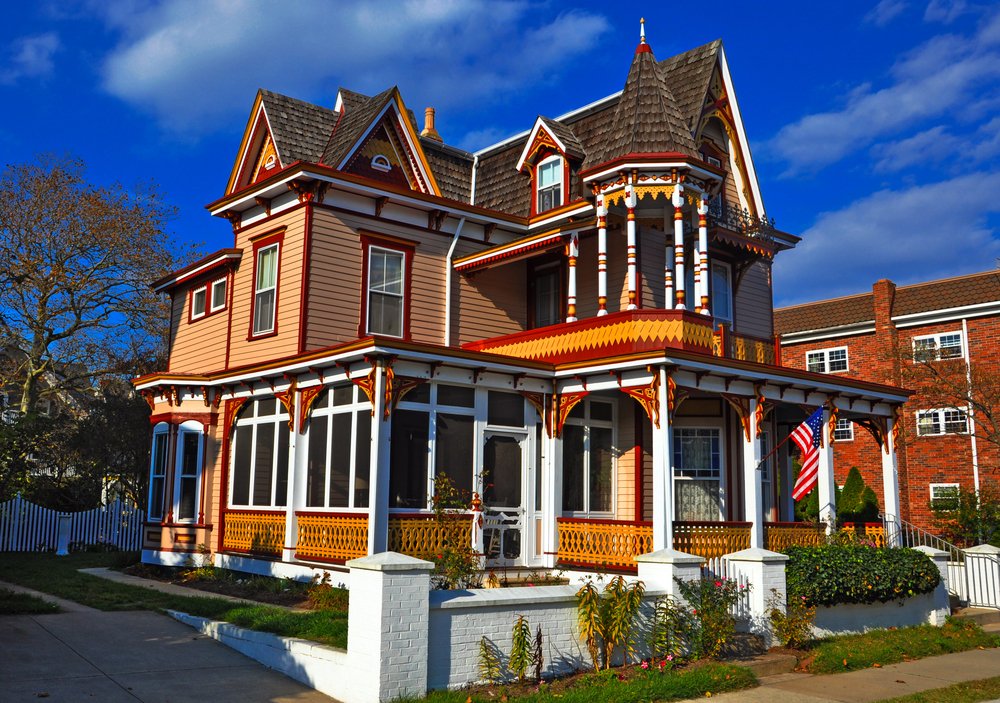
If you are the proud owner of a Victorian house, respect the history of the paint with burgundy and regal gold colors and enjoy the Victorian era with a modern pop-up. For the best result, use dark color for columns and doors and light shade for shutters.
Slate Gray and Lavender
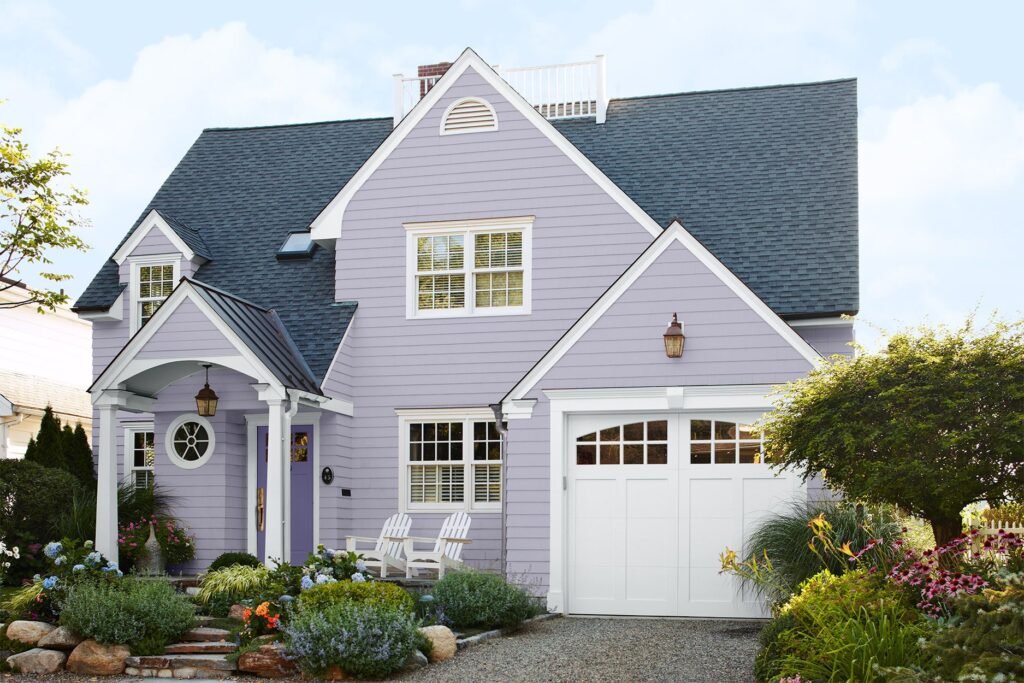
A gray Victorian house with a lavender pop-up looks amazing, especially when the lavender is used to highlight the architectural detailing and slate gray for the rest of the walls.
Play with blue
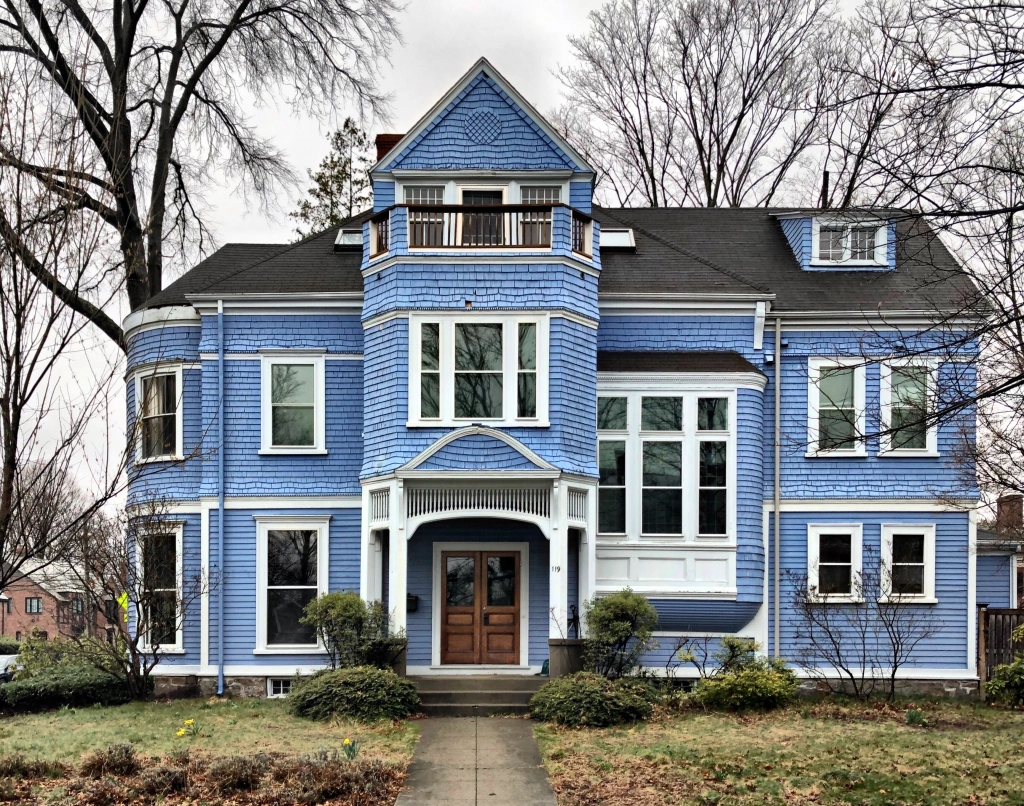
Blue attracts people’s attention, especially if it has a pattern. It adds visual appeal to the exterior decor. Blue houses and white trim extend the sky look, which is soothing to the eyes and soul.
Chocolate Brown and Cream

A Brown and cream combination is the best way to highlight the details. Get the trim painted with cream and the walls brown for an eye-catching impact. These colors complement each other perfectly to stand out from the crowd of colors.
Bright white
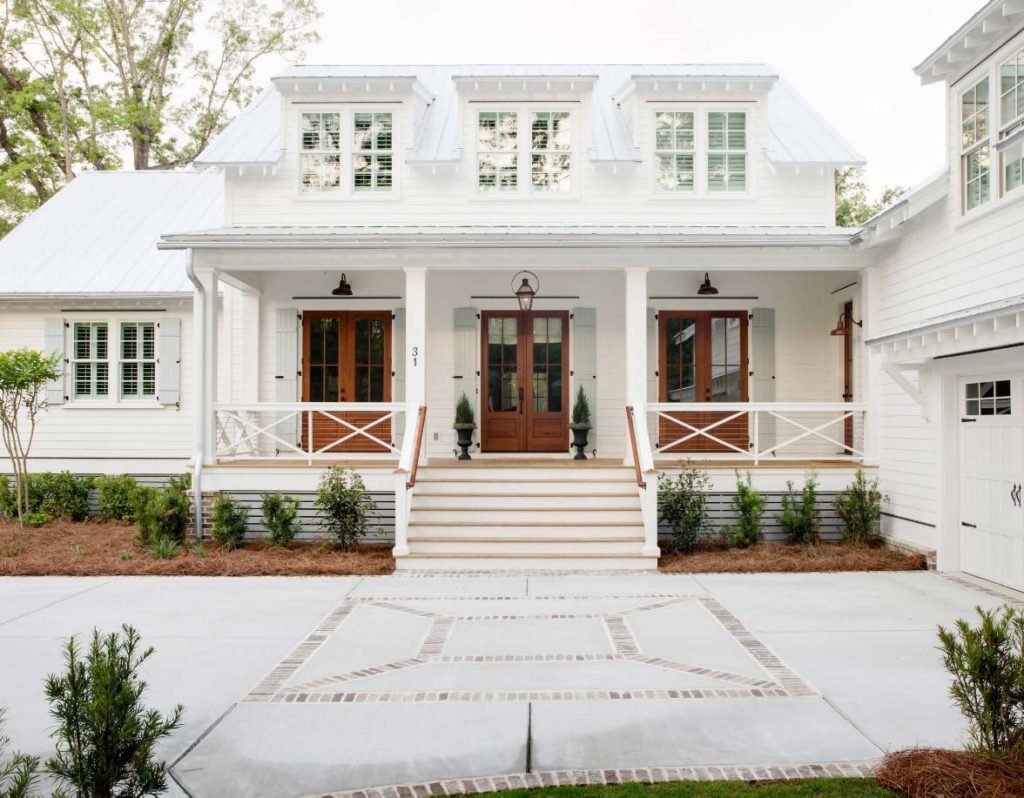
Bright white color gives a modern look to the Victorian house. If the roof is painted brown or gray, it provides a fresh and warm look.
Gray body and red accent

Grey body, red accent, and white trim make a perfect color combination for a contemporary look but with roots sunk in tradition.
Conclusion
To maintain the regal look in the modern era, Victorian house colors are the best possible way to maintain a balance between the contemporary and the conventional touch. Consider specific guidelines such as the location of the house, weather, architectural detail, and many more before choosing the colors to ensure the best impact.
FAQs
What are traditional Victorian house colors?
The traditional Victorian house colors are brown, blue, burgundy, chestnut, red, and maroon.
Why were Victorian houses so colorful?
Victorian houses were colorful because of the architectural detailing of the house. The house had a trim, carved columns, a scroll roof, a gable post, and spindles for which different colors were used to highlight the features, making it colorful.
What is the most popular Victorian house colors?
The most popular color for Victorian houses is red in various shades, followed by yellow and blue.
How many colors should a Victorian house have?
It should have a minimum of 6 colors. Though it sounds like too many colors, considering the number of features it has (fascia, shutters, front doors, soffits, and sidings), these colors will be effortlessly used.
